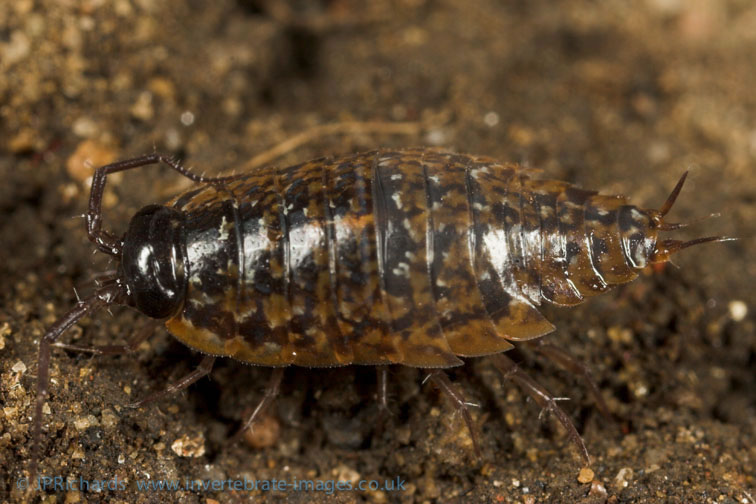Ligidium hypnorum (Cuvier, 1792)
Common name
Status:
GB IUCN status: Least Concern
ID Difficulty
Identification
Ligidium hypnorum is an attractively mottled woodlouse with a stepped body outline and antennal flagellum characteristically composed of numerous bead-like segments (otherwise only seen in the coastal Ligia oceanica).
It can be confused with the common Philoscia muscorum, which is of similar size and shape (but P. muscorum has just three elongated flagella segments).
Distribution
Ligidium hypnorum occurs mainly south of The Wash and River Severn, being most abundant in south east England. It has not been recorded from Ireland.
The NBN records from the north-east England and eastern Scotland need to be verified, and are almost certainly erroneous.
Habitat
In south-east England it inhabits a wide range of waterlogged habitats, but further north and west, on the edge of its European range, it becomes restricted to semi-natural habitats, such as ancient woodland and fen carr.
It occurs among moss and leaf litter, within sedge and grass tussocks, or beneath dead wood and stones. It is a very fast woodlouse, and difficult to capture.
This summary is based on the detailed account in Gregory (2009).
References
Gregory, S. (2009) Woodlice and Waterlice (Isopoda: Oniscidea & Asellota) in Britain and Ireland. Field Studies Council/Centre for Ecology & Hydrology.
Links
World List of Marine, Freshwater and Terrestrial Isopod Crustaceans: https://www.marinespecies.org/isopoda/aphia.php?p=taxdetails&id=883981



